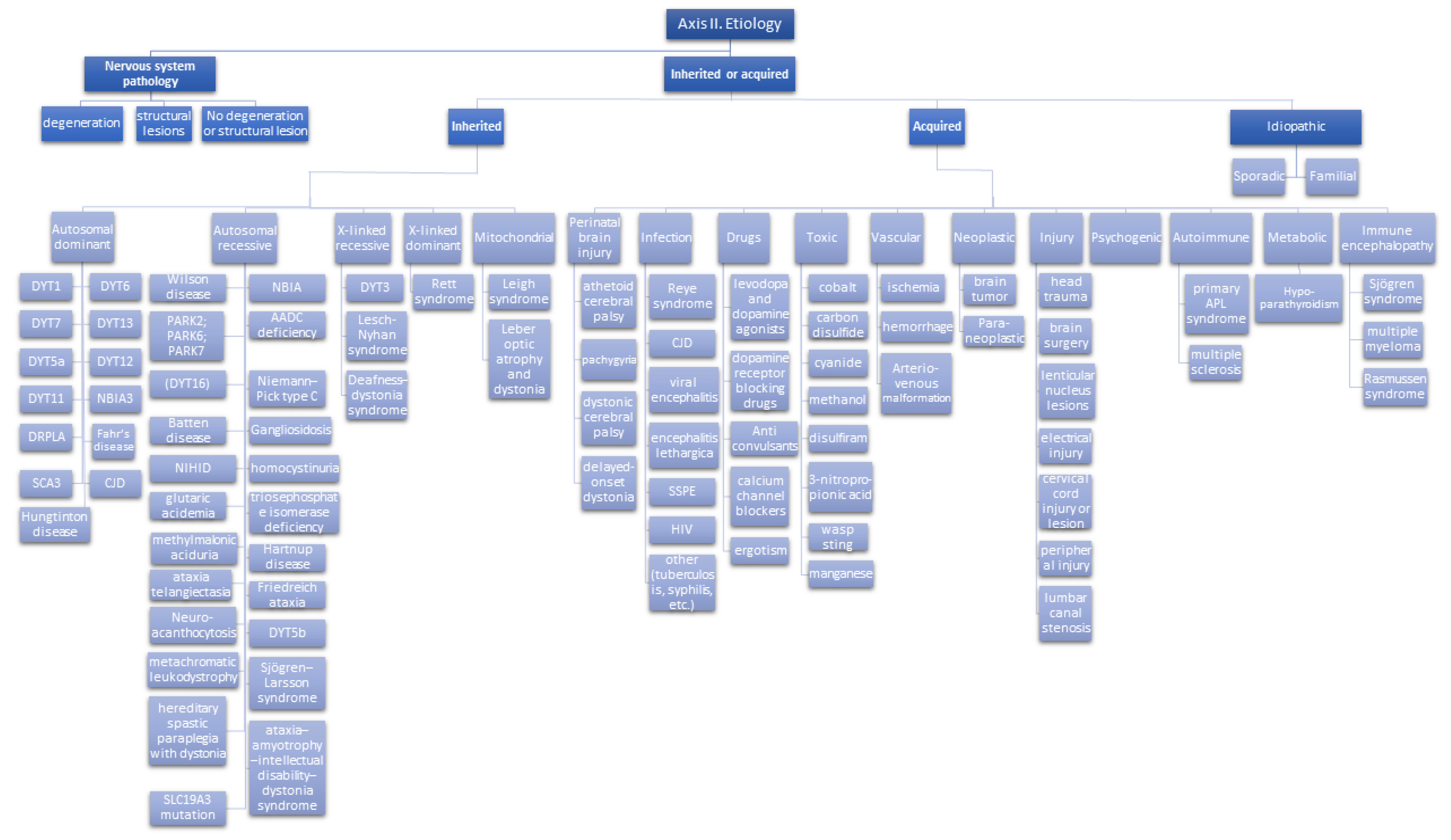Dystonia is a movement disorder characterized by sustained or intermittent muscle contractions causing abnormal and often repetitive, movements, postures, or both. Dystonic movements are typically patterned, twisting, and may be tremulous. Dystonia is often initiated or worsened by voluntary action and associated with overflow muscle activation. Because of its wide clinical spectrum, dystonia is often underdiagnosed or misdiagnosed. In clinical practice, dystonia could often present in association with other movement disorders. An accurate physical examination is essential to describe the correct phenomenology.
- dystonia
- clinical diagnosis
- classification
1. Introduction
2. Definition of Dystonia
- Dystonia is a movement disorder characterized by sustained or intermittent muscle contractions causing abnormal and often repetitive, movements, postures, or both.
- Dystonic movements are typically patterned, twisting, and may be tremulous.
- Dystonia is often initiated or worsened by voluntary action and associated with overflow muscle activation.
3. Classifications of Dystonia
| Year | Reference |
|---|---|
| 1976 | (Fahn and Eldridge) [3] |
| 1987 | (Fahn, Marsden et al.) [4] |
| 1998 | (Fahn, Marsden et al.) [5] |
| 2011 | (Albanese, Asmus et al.) [6] |
| 2013 | (Albanese, Bhatia et al.) [1] |
- Axis 1: Clinical characteristics (Figure 1)
- Axis 2: Etiology (Figure 2)


This entry is adapted from the peer-reviewed paper 10.3390/life12020206
References
- Albanese, A.; Bhatia, K.; Bressman, S.B.; DeLong, M.R.; Fahn, S.; Fung, V.S.; Hallett, M.; Jankovic, J.; Jinnah, H.A.; Klein, C. Phenomenology and classification of dystonia: A consensus update. Mov. Disord. 2013, 28, 863–873.
- Elia, A.; Lalli, S.; Albanese, A. Differential diagnosis of dystonia. Eur. J. Neurol. 2010, 17, 1–8.
- Fahn, S.; Eldridge, R. Definition of dystonia and classification of the dystonic states. Adv. Neurol. 1976, 14, 1–5.
- Fahn, S.; Marsden, C.D.; Calne, D.B. Classification and investigation of dystonia. Mov. Disord. 1987, 2, 332–358.
- Fahn, S.; Bressman, S.B.; Marsden, C.D. Classification of dystonia. Adv. Neurol. 1998, 78, 1–10.
- Albanese, A.; Asmus, F.; Bhatia, K.P.; Elia, A.E.; Elibol, B.; Filippini, G.; Gasser, T.; Krauss, J.K.; Nardocci, N.; Newton, A.; et al. EFNS guidelines on diagnosis and treatment of primary dystonias. Eur. J. Neurol. 2011, 18, 5–18.
- Fahn, S.; Jankovic, J.; Hallett, M. Principles and Practice of Movement Disorders; Elsevier Health Sciences: Oxford, UK, 2011.
